 German
German
01-20-2010 - Baby Monitor Fix for PG&E Smart Power Meter
! Attention: Read the Disclaimer at the end of the page !
Being a farther is the most wonderful thing on earth - especially if you can get sleep while the baby monitor will wake you up in case little David needs something. This worked very well until PG&E installed Smart Power Meters. These devices do transmit their data using a free radio band frequencies. The FCC power limitation rule for such devices had in mind to limit their range, so that lots of devices can share the same radio band. Since the power grid is everywhere, officials will have to decide whether this rule is still up to date... In my case the Smart Power Meter did prevent us from using our 900 MHz baby monitor.
After complaining, PG&E did send a technician the next day. He check our situation and told us, that we are already the 3rd baby monitor this day and even worse: Some garage door openers do open houses by themselves - caused by the Smart Meter disturbances. He gave me a reimbursement claim form and told me, that we should get a new baby monitor and that PG&E would reimburse us for our effort. This did sound fair, but is where the trouble started:
- googling a baby monitor
- driving to the mall
- buying the baby monitor
- driving back home
- testing the baby monitor
- being disappointed :-(
- googling another monitor
- driving back to the mall
- switching baby monitors, driving back home, testing, being disappointed again, ...
After the 6th device which we tried we finally kept an 2.4 GHz device (PG&E paid paid for it), but even this one didn't feature a squelch function (sound activation). I belief that non of the engineer ever did use his own creation. The devices either:
- were not loud enough
- didn't feature a squelch function
- got disturbed by the PG&E Smart Power Meter
Unbelievable: All these high tech radio devices missed their mission! Some of them had nice lullabies build in, other could switch on and off a light remotely - but who needs this? A real world parent needs a baby monitor, which is: loud, has a squelch function and doesn't get disturbed by other devices. Our "Sony NTM-910" featured all of this - until PG&E installed their Smart Power Meter.
So finally I gave up and started to think how to fix this problem myself:
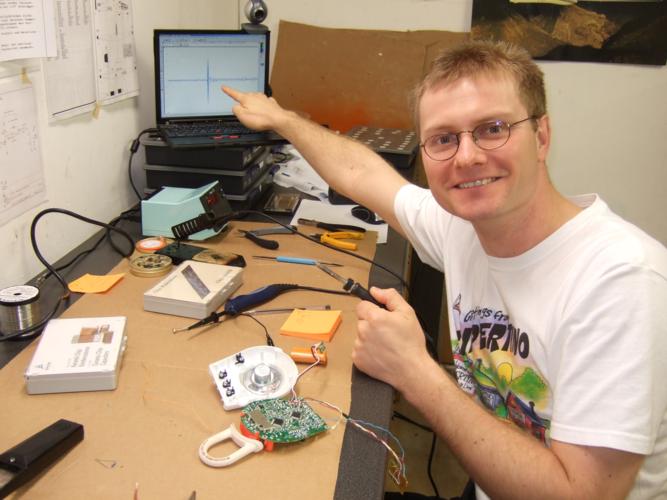 analyzing the signal
analyzing the signal
The first thing I did in my workshop was to analyze the signal. Just by listening at it, it became clear, that the rise time of the "knaccckccckcckkk" was much shorter than what even the strongest baby cry could produce. Connecting my USB oscilloscope to the laptop showed, that while the human voice could achieve rise times in the 100 ms range, the smart power meter signal amplitude slope were much stronger - with a rise time in the us range.
knackkkck signal amplitude

Another difference is, that the Smart Meter knaccckckk was just a couple of ms long, which is very different compared to baby crying ;-)
Armed with this knowledge I could design a circuit, which will suppress the interference. At the beginning I thought about using a microcontroller, but the longer I thought about it, it came clear to me that an analog solution would be much easier (I had lots of time to think, while driving to the malls and back...)

All what I had to do was, to grab the amplitude signal within the baby monitor, figuring out the rising slope and suppressing the signal in case the slope was to steep. This circuit will also suppress clapping in the hands - but I belief that our David will continue to cry and not switching to clapping in his hand if he needs something.
And exactly this is what the shown circuit shown above is doing:
The amplifier with C8 and R8 forms a differentiator. A steep positive slope will pull it's output to ground, so that diode D1 will discharge the capacitor C9 (R9 will charge C9 afterwards). The second amplifier is used as comparator in a logical inverter stage. The diode circuit with D2, C6 and R10 is forming a nice lock signal. The transistor N2 will cancel the interference signal before it can reach the level where the squelch would open the channel.
This by itself works already, but in case the squelch opens the channel by a quite baby sound (which is wanted), the loud interferences can be heard - and this will make you stay in bed at night! You can't cancel out this noise completely, but you can limit it to a level where it is acceptable. Transistor N1 is simply connected to the middle contact of the volume control potentiometer - if interference is detected then N1 will mute the baby monitor. The huge KNACKCCCKKCKCKCKKKkk will become a Mmmbt :-)
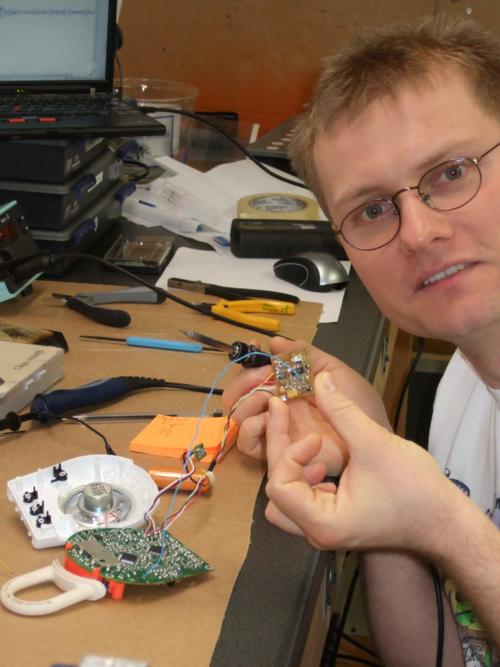 test circuit
test circuit
I verified the idea with a test circuit. For the first design I even implemented a time measuring circuit with reset, but you don't need this - the circuit described above is already doing the job.
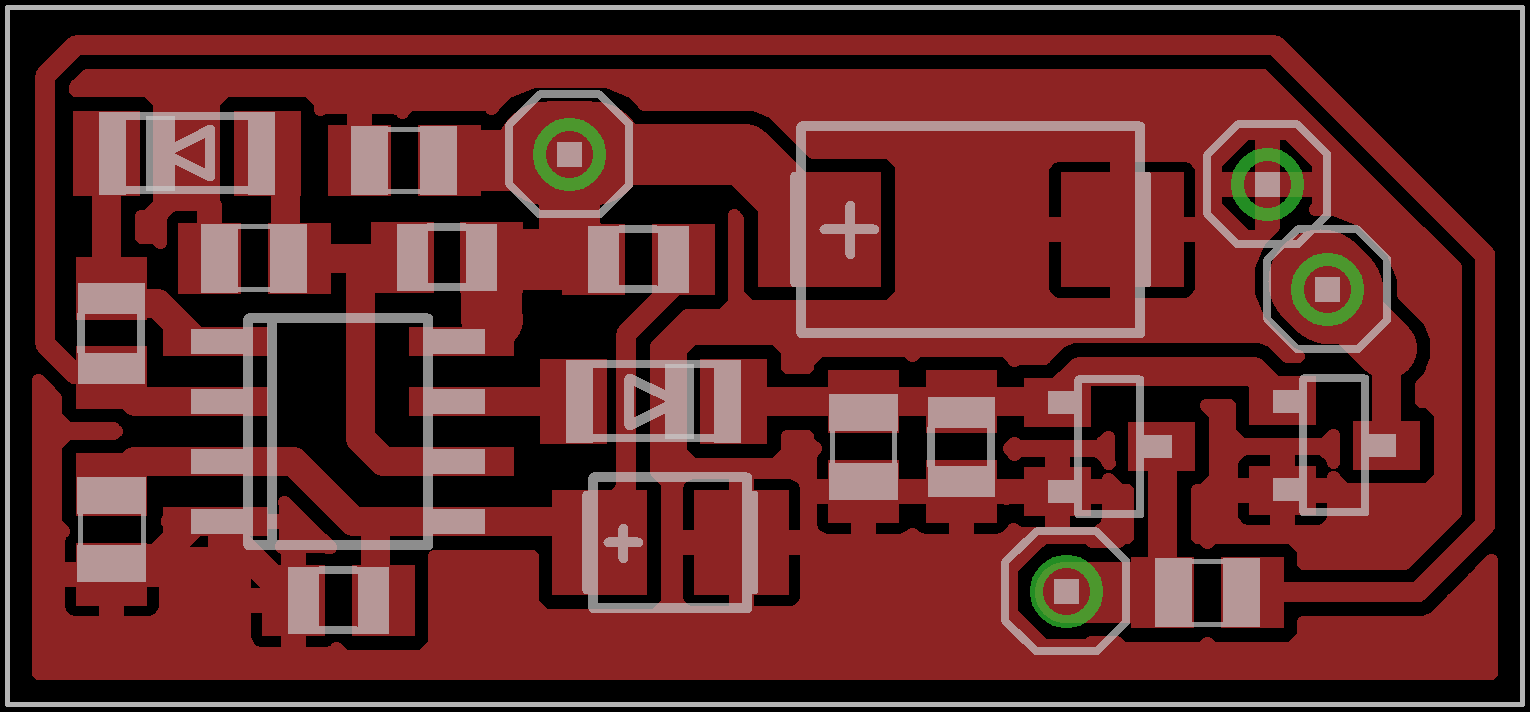
The PSB design with Eagle was a standard task - one hour later the schematic and circuit was there. Only one layer and no wire jumper is used :-)
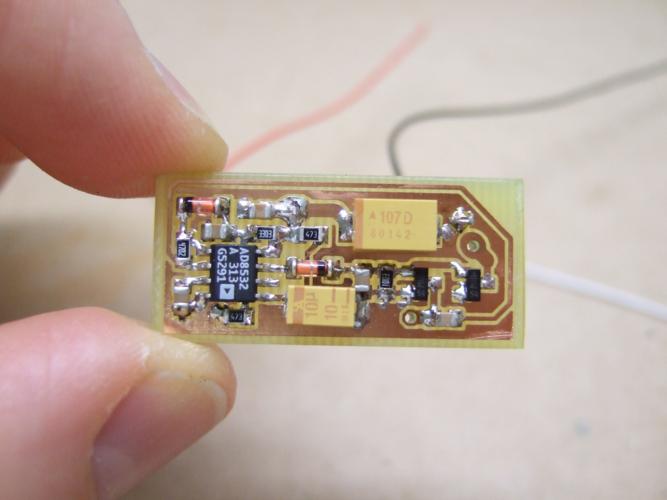
It was important to me, that the circuit would fit completely into the baby monitor. I didn't expect a large acceptance of a bare PCB on a baby monitor from a first time mom ;-)
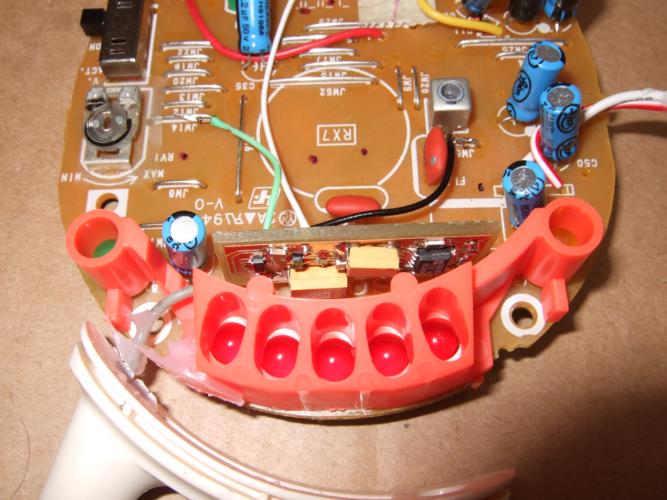
The PCB fits nicely below the sound level indicator. Glue holds the PCB in place.
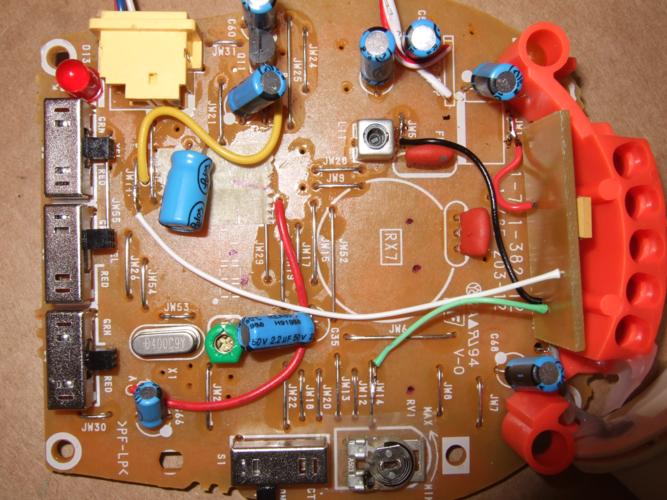
The picture shows where you can find the signals and voltages, which the circuit needs. Connecting these signal is no problem, since lots of wire jumpers are used in the baby monitor.
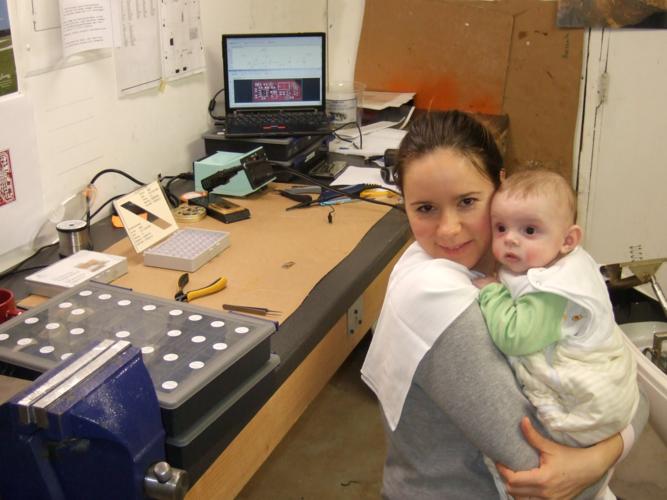
Mom and Dad got now the chance of more sleep :-)
Impressum, Disclaimer & Datenschutz
addition to the Disclaimer: Building the device regarding to the plans and links on my homepage will be done at your own risk. There is now responsibility at my side or any other linked pages for the functionality of the circuits nor the truth nor the correctness of the statements. Whatever you do - it's your responsibility. This page is only for information purposes about what I'm doing in my free time. I do not guarantee that the contains is correct, true or complete!
![]()